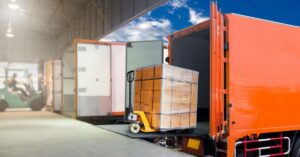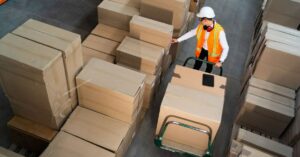Reverse logistics has often been overlooked, but with the rise of online retail and increasing customer expectations, this area of supply chains is under greater pressure than ever. To remain competitive and profitable, companies must innovate and adapt to these changing market demands. Given its significant impact, anyone involved in management or entrepreneurship should understand reverse logistics.
So, what is reverse logistics? In this article, we’ll explore the components of reverse logistics, key challenges, hidden costs, it’s undeniable value, and potential innovations and improvements. Read on to gain insight into one of the most challenging yet essential segments of supply chains.

What is Reverse Logistics?
Reverse logistics is a supply chain management process that moves goods from customers back to sellers or manufacturers. This includes handling returns, recycling, and other post-purchase activities.
Starting from the end consumer, reverse logistics moves products backward through the supply chain to the distributor or manufacturer. In reverse logistics, products can undergo various aftermarket processes, including:
- Remanufacturing: Rebuilding the product using reused, repaired, or new parts.
- Refurbishment: Repairing or verifying returned products for resale in good condition.
- Servicing: This broad category covers customer service, field service, and managing product returns, including issuing return merchandise authorizations.
- Returns Management: Handling the process of returned goods.
- Recycling and Waste Management: Proper disposal and recycling of products.
- Warranty Management: Overseeing product warranties and related services.
- Warehouse Management: Efficient storage and handling of returned goods.

Reverse Logistics Process
So what is reverse logistics? The reverse logistics process encompasses handling returns and purchasing surplus goods and materials, along with managing leases and refurbishments. Its scope varies across industries, with distinct economic incentives driving efforts to enhance reverse logistics management.
For instance, consider a scenario where a customer purchases a defective electronic device and requests a return. In this case, the reverse logistics process involves inspecting the item upon return to determine the nature of the defect and whether it can be refurbished or recycled. Such meticulous examination ensures that the product is appropriately addressed, aligning with both economic and environmental objectives. The reverse logistics process unfolds as follows:

Customer initiates a return
Customers decide to return a product to the retailer, either by dropping it off at a designated point or a local store. The returned parcel then heads back to the retailer’s warehouse.
The product is inspected
Upon arrival, the item undergoes inspection in a separate area of the warehouse. Sellable items are returned to inventory, while faulty or damaged ones are set aside for recycling or refurbishment.
The customer is refunded
Retailers assess if the return meets their policy, which typically includes conditions like receiving the return within a specified timeframe, proof of purchase, original packaging, and unused condition. If criteria are met, customers receive a refund, often in the form of store credit or back to the original payment method.
The product is resold, refurbished, or recycled
Depending on its condition, the retailer may:
- Resell or reuse the product if it’s in excellent condition.
- Refurbish or remanufacture it for resale if it needs slight adjustments.
- Recycle or donate it if it’s at its end-of-life or too costly to fix. Proper disposal options support environmentally conscious consumers.
Benefits of Reverse Logistics
For businesses, reverse logistics management has many benefits, the first of which is improved client relations. Seeing returns as a chance to highlight great customer service strengthens relationships with clients and highlights a dedication to their satisfaction even after the sale.
Furthermore, by exhibiting environmentally responsible methods, efficient reverse logistics enhances brand perception. Businesses show their commitment to the environment by appropriately recycling or repurposing products, which resonates well with consumers who are becoming more concerned about sustainability.
Reverse logistics also prolongs product life cycles, which is in line with the emerging trends of value maximization and waste reduction. Refurbished or repaired items that are returned or deemed obsolete can often prolong their useful life and reduce waste. By reusing and reselling returned goods, this lowers the company risks connected to consumer discontent while also creating opportunities for greater market penetration.
Reverse Logistics with Unilogic Group
In the industry, Unilogic’s reverse logistics system is a shining example of dependability and efficiency. By utilizing state-of-the-art technology and efficient workflows, ULG guarantees that returned goods are handled promptly and precisely, reducing processing times and increasing client satisfaction.
Through the use of sophisticated inspection methods and automated processes, we ensure that returned goods are quickly sorted and sent to the proper location for recycling, resale, or refurbishment. This methodical approach strengthens Unilogic’s standing as a reliable partner in the logistics industry while simultaneously improving operational efficiency and preserving the integrity of the supply chain.

Furthermore, we paid close attention to cost-effectiveness during the creation of our reverse logistics system to ensure that neither quality nor customer experience is compromised. Strategic planning and optimization help us maximize income potential by quickly identifying options for reuse or resale, minimizing the financial impact of returns.
Clients can feel secure knowing that their reputation is preserved, expenses are managed, and sustainability objectives are fulfilled with Unilogic’s reverse logistics system, setting them up for long-term success in the cutthroat market of today.

